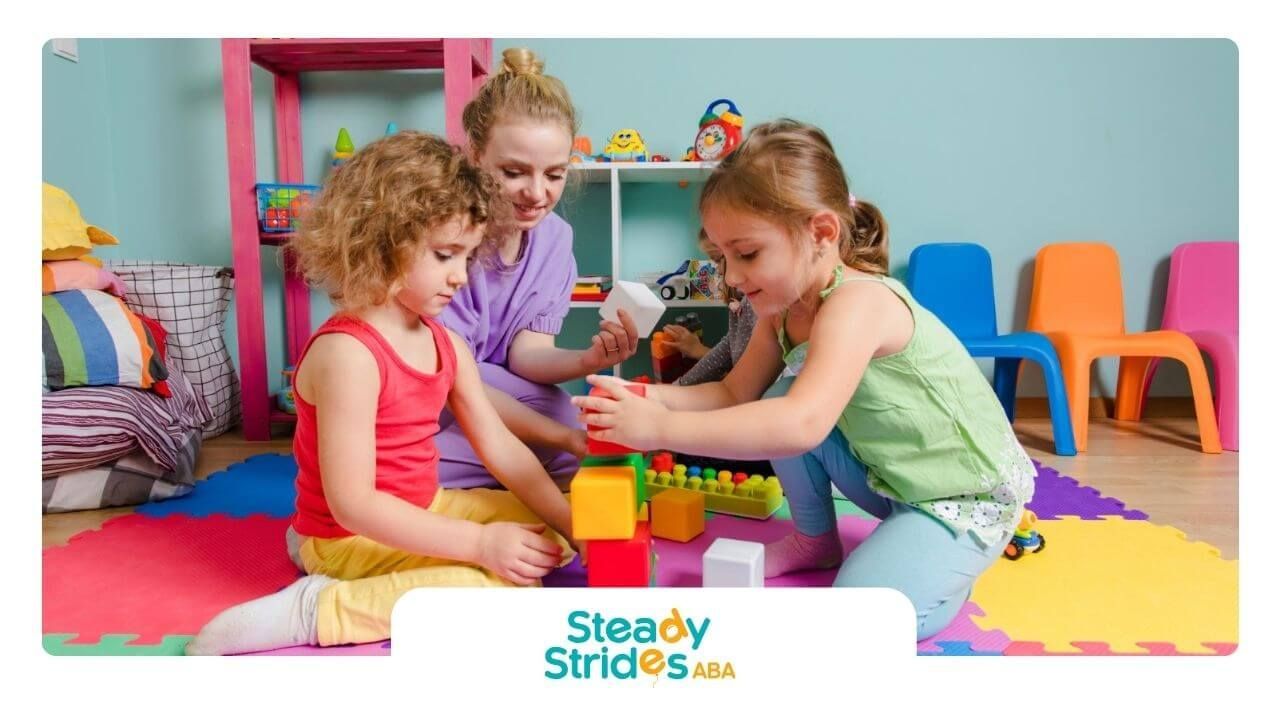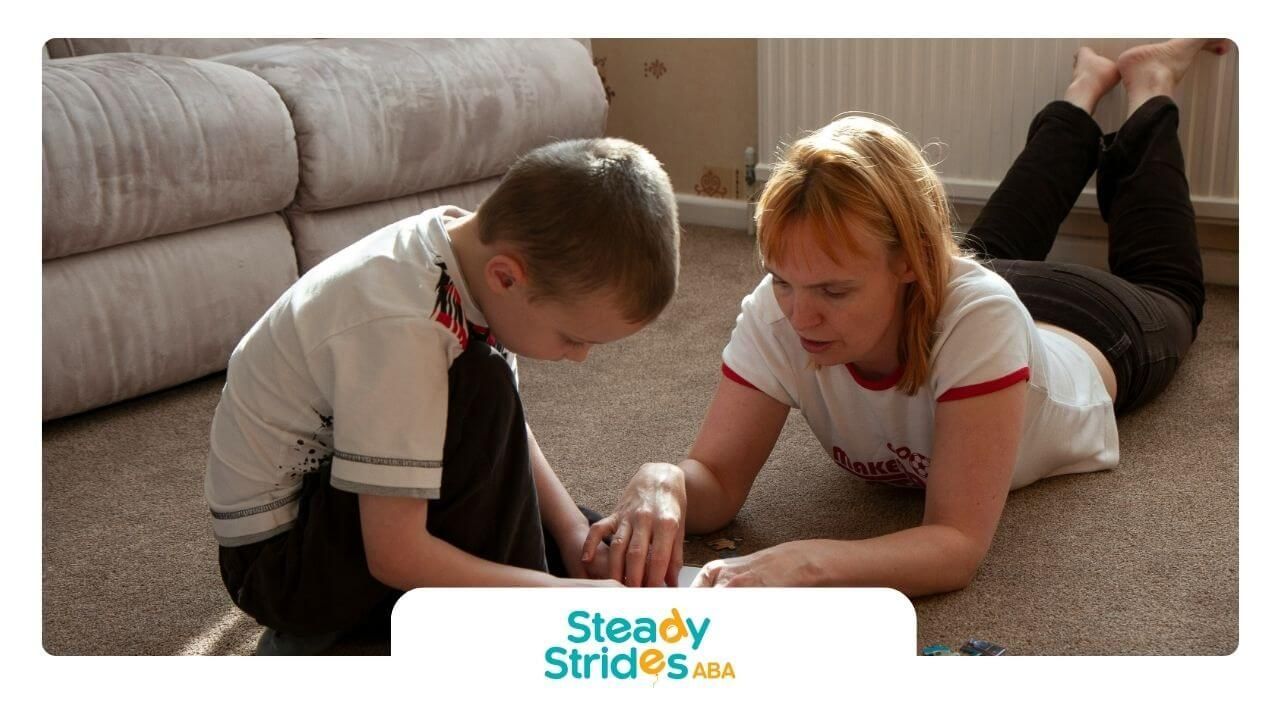Understanding ABA Therapy
ABA therapy in daycare settings offers a powerful way to reinforce learned skills beyond clinic walls. Applied Behavior Analysis is a scientifically designed treatment that examines how environmental factors influence behavior. It has become a best practice for supporting children with autism spectrum disorder, thanks to more than 20 studies demonstrating gains in intellectual functioning, language development, daily living skills, and social functioning when programs are intensive and long-term.
Definition and Principles
ABA applies principles of learning and motivation to solve problems of social significance. Key principles include:
- Positive reinforcement, which rewards desired behaviors to increase their occurrence
- The ABC model (Antecedent, Behavior, Consequence) for pinpointing triggers and outcomes
- Natural environment training, teaching skills in everyday settings rather than in isolation
- Data-driven decision making, collecting and analyzing behavioral data to guide interventions
Role in Early Intervention
Early intervention with ABA can lead to larger, more lasting gains. A meta-analysis of 29 studies found moderately to highly effective benefits in language, intellectual functioning, daily living skills, and social functioning for young children receiving comprehensive ABA interventions. By starting in toddler years, therapy can capitalize on developmental neuroplasticity and help children build a strong foundation before entering group environments like daycare.
Benefits of Daycare Integration
Integrating therapy into daycare settings brings structure and natural practice opportunities. When children access ABA during their daily routine, skills generalize more quickly, and caregivers enjoy greater flexibility.
Consistent Skill Generalization
Daycare integration ensures that children practice communication, social, and adaptive skills across multiple caregivers and activities. Rather than isolating therapy in a clinic, consistent exposure in play, circle time, and snack routines reinforces learning.
Peer Interaction Opportunities
Group settings give children a chance to use new skills with same-age peers. This social exposure promotes empathy and inclusion among neurotypical classmates, while children with ASD gain real-world practice in sharing, turn-taking, and nonverbal communication.
Family Schedule Support
Embedding therapy within daycare eliminates midday clinic visits and reduces disruptions to family routines. Working parents can maintain their schedules knowing that qualified professionals deliver evidence-based interventions throughout the day.
Comparing Daycare Models
| Aspect | Traditional Daycare | ABA Integrated Daycare |
|---|---|---|
| Therapy Location | Off-site clinic visits | On-site, within daily schedule |
| Skill Practice | Limited to classroom time | Embedded in all routines and play |
| Parent Involvement | Separate parent meetings | Collaborative planning and regular updates |
| Peer Exposure | General interaction only | Structured social skills coaching |
Developing Behavior Plans
Crafting a collaborative behavior plan is essential for seamless implementation. Plans must reflect each child’s strengths, routines, and family values.
Involving Families
Effective plans emerge when ABA professionals and families co-create goals. Collaborative behavior plan development ensures goals align with home routines and cultural values. Studies show that involving parents from the start yields better outcomes and smoother generalization of skills.
Customizing to Routines
Plans should break skills into manageable steps that fit into daycare activities, such as hand-washing before snack time or greeting peers during arrival. This contextual approach promotes natural practice and quick mastery.
Ensuring Safety and Respect
Behavior plans must address challenging behaviors while maintaining the child’s dignity. By conducting functional assessments and setting clear antecedents and consequences, therapists help staff respond calmly and consistently.
Training Families and Staff
Empowering both caregivers and daycare personnel builds a shared commitment to progress. Training is a core component of any successful ABA program.
Caregiver Empowerment
Parent training equips families with practical strategies to reinforce skills at home. Through modeling, role play, and coaching, caregivers learn to implement prompts, deliver reinforcement, and track behavior trends themselves.
Staff Professional Development
Daycare staff benefit from workshops led by Board Certified Behavior Analysts (BCBAs). These sessions cover:
- Principles of positive reinforcement
- Identification of antecedents and consequences
- Use of visual supports like picture schedules
- Strategies for preventing challenging behaviors
Many states require BCBAs to hold a master’s degree and complete supervised practical hours before certification. This ensures training aligns with ethical standards and evidence-based practice.
Collaborative Communication
Regular check-ins between therapists, teachers, and families keep everyone on the same page. Brief daily or weekly huddles allow teams to review progress, adjust goals, and celebrate successes.
Data Collection Techniques
Accurate tracking of behavior and skill acquisition drives continuous improvement. Data collection in daycare settings must be practical and transparent.
Session-Based Tracking
Therapists and trained staff record data during key activities. This might include tallying social initiations during free play or noting correct responses in group instruction.
Visual Progress Sharing
Data transforms into easy-to-read graphs and charts. Families receive summaries that highlight trends over weeks or months, making progress tangible and motivating.
Joint Decision Making
When families review data alongside professionals, they share responsibility for decision making. This joint approach increases accuracy and fosters trust.
Measuring Therapy Outcomes
Demonstrating effectiveness builds confidence in ABA programs. Outcomes can be evaluated through peer-reviewed research and real-world case studies.
Evidence from Research
A 30-year longitudinal study of intensive UCLA Young Autism Project programs found that 47 percent of participants achieved normal intellectual and educational functioning, compared to only 2 percent of a typically treated control group. This landmark study underscores the potential of long-term, comprehensive ABA.
A meta-analysis by Virués-Ortega reported medium to large effect sizes in language, daily living, and social skills when early ABA interventions were thorough and sustained.
Real World Success Stories
Daycare-based ABA programs have helped children transition smoothly into preschool and kindergarten. Teachers report marked improvements in independent play, peer requests, and tolerance for group routines. Consistent reinforcement throughout the day often accelerates progress compared to clinic-only models.
Overcoming Common Challenges
Even with strong programs, teams encounter hurdles. Addressing them proactively keeps therapy on track.
Communication Gaps
Challenge: Misalignment between clinic teams and daycare staff.
Solution: Establish structured handoff forms and digital logs to share behavior data and daily goals.
Resource Constraints
Challenge: Limited staff availability for one-on-one sessions.
Solution: Embed brief, targeted interventions within group activities and use peer-mediated prompts.
Maintaining Consistency
Challenge: Staff turnover can disrupt routines.
Solution: Develop simple visual guides and quick-start manuals that new team members can follow immediately.
Conclusion
ABA therapy in daycare settings creates a cohesive environment where children practice vital skills throughout their day. By blending evidence-based methods with familiar routines, therapy becomes part of everyday life rather than a separate appointment. Collaboration among BCBAs, daycare staff, and families drives meaningful, lasting progress. Parents and educators interested in this model should seek accredited programs, verify staff credentials, and ask about caregiver training and data-sharing procedures. When all team members work together, children gain confidence, families gain peace of mind, and skills acquired in one setting naturally extend to every aspect of daily life.
At Steady Strides ABA, we believe learning doesn’t stop when therapy ends. That’s why our ABA services in Texas extend into daycare or center-based settings, where children can practice essential communication, social, and daily living skills throughout the day. By working closely with daycare staff and families, our BCBAs and therapists create seamless support that helps children grow with confidence.
Contact us today to learn how daycare-based ABA therapy can help your child succeed in every environment.
Frequently Asked Questions
What is ABA therapy in daycare?
ABA therapy in daycare integrates evidence-based teaching into a child’s daily routines. Skills like communication, sharing, following directions, and self-help are practiced naturally in a familiar environment.
How does daycare-based ABA therapy benefit children with autism?
It provides consistent learning opportunities across settings, helps children generalize skills beyond home and clinic, and fosters independence in social and daily activities with peers.
Can parents and daycare staff be involved in ABA therapy?
Yes. Collaboration is key. Parents receive training to reinforce skills at home, while daycare staff partner with BCBAs and therapists to ensure strategies are applied consistently throughout the child’s day.
SOURCES:
https://pmc.ncbi.nlm.nih.gov/articles/PMC9458805/
https://theuncommonthread.org/wp-content/uploads/ABA-Support-in-PreK-Daycare-Environment.pdf
https://www.iloveaba.com/2017/02/off-to-preschool-or-off-to-therapy.html
https://www.autismspeaks.org/applied-behavior-analysis
https://raisingchildren.net.au/autism/therapies-guide/applied-behaviour-analysis-aba













